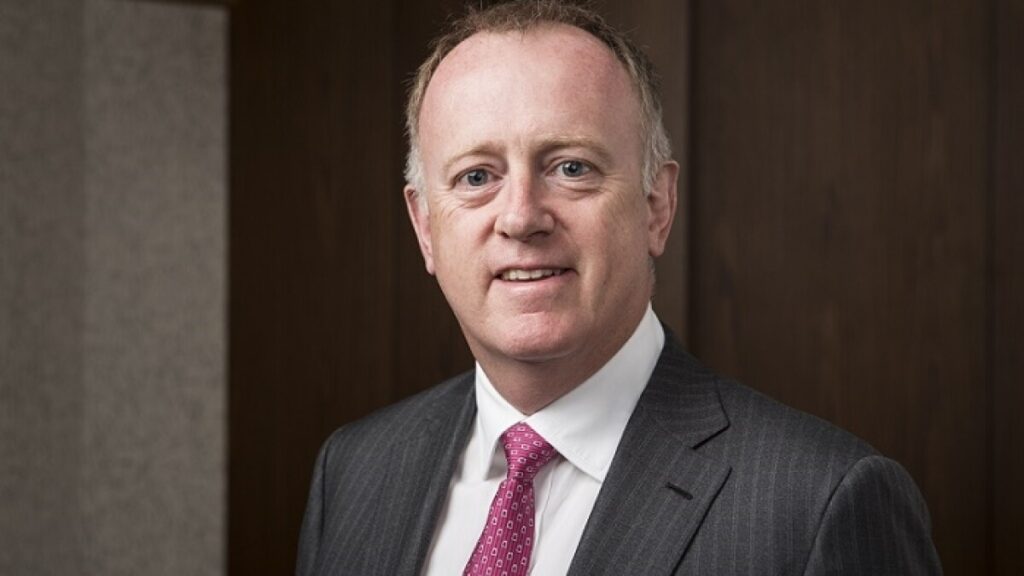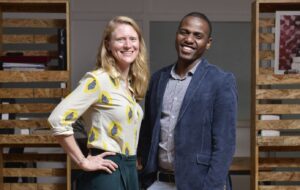Speaking from the United Nations (UN) COP 27 event in Egypt, Neal explained that Lloyd’s has worked with six managing agents on a pilot to test a carbon-emissions measurement methodology that will help syndicates track and transition their portfolios.
The pilot has involved investigating data challenges within the Lloyd’s market and will ultimately help establish a reporting regime that can, in turn, enable Lloyd’s to measure progress towards a net-zero underwriting position at an aggregate level.
The Corporation will publish its latest ESG guidance to the market in early 2023, with a transition roadmap for managing agents.
In an interview covering various ESG activities at Lloyd’s, Neal said: “We are committed to supporting multi-sector decarbonisation and the transition. We are developing a measurement framework to allow us to track and measure our progress in transitioning to a net-zero underwriting position by 2050, as well as support the industry in innovating for a lower-carbon future.”
Lloyd’s has led this workstream throughout 2022 under the Sustainable Markets Initiative (SMI), which itself was convened by King Charles and involved the launch of the Lloyd’s-chaired SMI Insurance Task Force last year.
The task force comprises (re)insurance industry executives who are working on various programmes to build a net-zero economy.
Neal explained three main elements to the pilot with managing agents.
One involved understanding existing underwriting policy-level data which can be used to create a measurement framework for an insured’s carbon footprint.
The second was looking at the need for third-party data sources, such as ESG ratings providers. The pilot explored how these can be used, as a supplement to existing underwriting data, to inform decisions that factor in an insured’s carbon emissions.
The third aspect involved understanding an insured’s own transition plan and working towards a consolidated questionnaire to collect ESG data, to avoid over-burdening insureds with data-gathering exercises.
On this third element, Neal said: “We do not need to be sending people questionnaires with 100 questions. I’ve seen some with 130 questions, which is just crazy.”
We believe it will be crucial that measurement supports the industry in insuring the transition, allowing for nuance and context around sectors and industries
The CEO said he would like to see this new measurement framework adopted universally, though he added: “We’ll be gentle around determining when and how to do that.”
He added: “Based on our work to date, we believe it will be crucial that measurement supports the industry in insuring the transition, allowing for nuance and context around sectors and industries, particularly where their emissions will enable others’ transition plans and be crucial for driving a global transition rather than creating pockets of ‘un-insurability’ in hard-to-abate sectors.”
Neal said that the measurement framework will need to be developed, adapted and improved over time.
“If we can get to a credible framework, we can then say ‘this is what insuring the transition looks like and what it means’. And at an aggregate level, we can be held to account,” he said.
Exclusions and engagement
In the lead-up to COP 27, London market firms had been discussing the impact of any further announcements from syndicates around fossil fuel exclusions.
This followed Munich Re Syndicate’s announcement last month that it would cease writing oil and gas from January.
When asked about his preference for how underwriters should engage with the market around such decisions in future, Neal explained that the key focus for Lloyd’s is on ensuring managing agents’ ESG plans are of a sufficient standard, and that they have a legitimate, credible and well-articulated pathway to net zero.
While Lloyd’s is not mandating any exclusions on fossil fuels, Neal added: “Do we think anybody should be insuring new thermal coal? No. Do we think anybody should be involved in Arctic drilling? No. We don’t think the right thing to do is to mandate that, yet that may change in time. It’s therefore for managing agents, or the insurers that back those managing agents, to make the decision.”
Neal acknowledged that there could in future be pockets of capacity constraints for select energy projects, though he added that it is too early to say.
He added: “Brokers should be alert to that prospect. If there are certain challenges around, for example, new fossil-fuel-based projects, I don’t think anyone should be surprised by that.”
ESG plans
Neal said the quality of ESG plans Lloyd’s has seen this year has been “variable”.
Managing agents were previously asked to develop the plans in 2022, for consideration in the 2023 business planning cycle.
Neal added: “The quality of some of the plans is superb, in terms of the thinking that’s gone into them, and there are others that are too basic. So we have said that we’ll give people 12 months, including dialogue with them, to get the plans in the right shape.
“The challenge is being articulate around the transition.”
Around 40% of the world’s fertilizer comes out of Russia and Ukraine. If that fertilizer can’t be moved, there won’t be a rice crop in 2023, and that has a huge impact on the well-being of one-third of the world’s population
The Black Sea corridor
Separate to the net-zero agenda, part of Lloyd’s’ activities at COP 27 have involved negotiations with the UN relating to insurers’ involvement in facilitating the movement of cargo ships in the Black Sea.
Trade corridors in the Black Sea for grain exports recently reopened, after Russia resumed participation in an agreement managed by the UN and Turkey.
Ascot, which launched a facility in July with Marsh to provide coverage for ships passing through the Black Sea, had paused quoting on new grain shipments in the region but resumed underwriting on it earlier this month.

Neal said: “We’ve spent some time with the UN, including with the secretary general, to do our bit to maintain the passage for food supplies. That’s us at our best, demonstrating what we can do.”
Neal explained that, to help keep this passage open, there needs to be an appropriate alignment of the framework for licences – which, for example, permit the insurance of specified activities in the event of international trade sanctions – among the US, EU and UK.
He added: “We have had those conversations directly with the UN secretary general. We’re expecting good news by the end of the week to allow that passage to remain open.
“Around 40% of the world’s fertilizer comes out of Russia and the Ukraine. If that fertilizer can’t be moved, there won’t be a rice crop in 2023, and that has a huge impact on the well-being of one-third of the world’s population. If we’re seen as part of the solution, co-operatively and on a humanitarian basis, it’s good news for insurance.”








